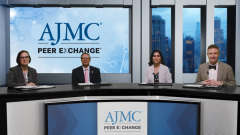
The Role of MRD Status in Post-ASCT Treatment Decisions and Clinical Integration
Panelists discuss how minimal residual disease (MRD) status can guide post-transplant treatment decisions, particularly for high-risk patients who don’t achieve MRD negativity and patients considering discontinuation of long-term maintenance therapy.
This segment explores how minimal residual disease (MRD) status influences treatment decisions following transplant and discusses strategies for integrating MRD-guided approaches into clinical practice. While the FDA has approved MRD as an end point, the clinical application of MRD testing for treatment decisions is still evolving, with ongoing clinical trials providing additional evidence. The discussion emphasizes 2 key patient populations where MRD testing proves particularly valuable in posttransplant management and treatment planning.
High-risk patients who fail to achieve MRD negativity after transplant represent the first critical group requiring modified treatment approaches. These patients already face potentially poor outcomes, and persistent disease after transplant necessitates treatment intensification or alternative strategies. The second important group includes patients on long-term maintenance therapy who have achieved sustained MRD negativity over extended periods (2 to 4 years), where treatment discontinuation discussions become more feasible and evidence based.
The concept of sustained MRD negativity introduces important considerations for both patient care and health care economics. Patients experiencing adverse effects from long-term maintenance therapy may be candidates for treatment discontinuation if they maintain sustained MRD negativity. This approach also offers potential cost offsets for payers, who may be more willing to cover innovative upfront therapies if they lead to treatment-free intervals. The discussion highlights MRD testing’s growing importance in personalizing multiple myeloma treatment decisions and optimizing both clinical and economic outcomes.
Newsletter
Stay ahead of policy, cost, and value—subscribe to AJMC for expert insights at the intersection of clinical care and health economics.













































